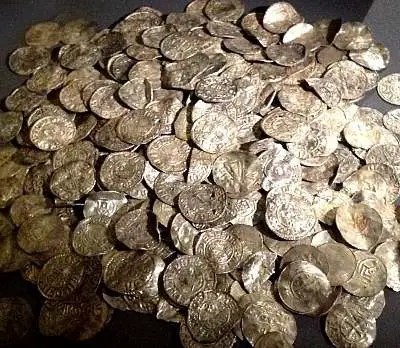|
The Danegeld
Things were so desperate in the late 10th Century in England that the king of the strongest English kingdom resorted to "protection money" to avoid further battles with the invading Danes. This was called the Danegeld.
The money must not have lasted very long because the Danes were back just three short years later. Tryggvason and Sweden's King Sweyn Forkbeard laid siege to London, and Æthelred again collected a bunch of money and sent it to the invaders. Records show that similar payments were made in 1002, in 1007, and then in 1012, when the response from the English to the sack of Canterbury and the murder of the archbishop there was yet more money aimed at preventing more bloodshed. The Danish invasion of Sweyn Forkbeard's son Canute in 1016 was so successful that Canute became King of England. The Danegeld was no longer needed. |
|
Social Studies for Kids
copyright 2002–2024
David White



 One of the first known such payments was made in 991, after a particularly brutal Danish victory at the Battle of Maldon in Essex.
One of the first known such payments was made in 991, after a particularly brutal Danish victory at the Battle of Maldon in Essex. 
